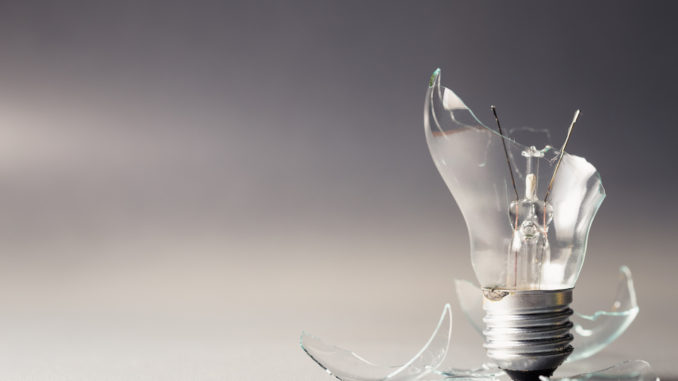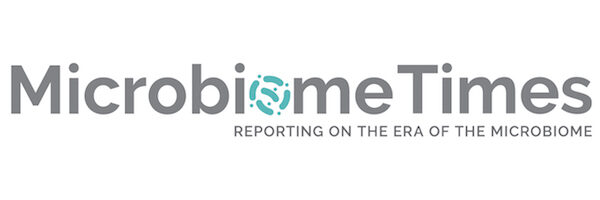
Although the April 15, 2020 decision of the U.S. Patent Trial and Appeal Board (PTAB) was to invalidate The University of Chicago’s US microbiome patent, much can be learned and some positive notes echo from that decision for the microbiome community.
The patent
Chicago’s U.S. application was filed using a Track-1 expedited process suggesting that Evelo Biosciences3, based in Cambridge, MA (the exclusive licensee), wished to rapidly obtain patent protection. Just 1.5 year later, on January 2, 2018, the University of Chicago was granted a U.S. patent, claim 1 of which reads:
- A method of treating cancer in a human subject comprising co-administering to the subject an immune checkpoint inhibitor and a bacterial formulation comprising bacteria of the genus Bifidobacterium.
Of note, is the fact that the claim language defines three key aspects of the invention relatively broadly; the principal claim is drawn to: (1) the treatment of any cancer (2) the checkpoint inhibitor is not restricted to a specific class of such inhibitors, and from the description it is clear that this included antibodies and nucleic acids, (3) the use of any species/strain of the broad genera Bifidobacteria.
The validity of US Pat. No. 9855302 (“the `302 patent”) was challenged 9 months after grant by Genome & Company2when they filed a petition for post grant review (PGR) before the PTAB. Genome & Company argued that the `302 patent was invalid because: (1) the claims defining the invention were so broad as not to be enabled by the teachings and specific examples provided in the application; and (2) the claimed invention was obvious in view of prior publications.
The good news for microbiome innovators and investors is that the PTAB considered that defining the invention with reference to the very broad and diverse group of bacteria belonging to the genera Bifidobacteria was not overly broad. The reasoning included that the specification clearly taught how to determine if any given Bifidobacterium worked according to the invention in combination with a checkpoint inhibitor, and included working examples of different species of Bifidobacteria that showed anti-tumourigenic activity in this context. This may be contrasted with the poorer level of teachings in the application regarding what constituted the appropriate checkpoint inhibitor. The claims were found invalid for a lack of enablement with respect to an overly broad definition of checkpoint inhibitor but not because of the definition of the bacteria for use in the combination therapy.
For the obviousness arguments, the cited publications described the use of checkpoint inhibitors to treat colon cancer. Another publication described that Bifidobacterium longum inhibits colon cancer. Genome and Co. argued there would have been motivation to combine these documents making the use of the combination to treat cancer, as claimed, obvious.
In defence, the patent owner argued that how Bifidobacteria worked to improve the cancer fighting activity of the checkpoint inhibitors was not described in the prior art. The PTAB noted that even if that was the case, the claims did not recite the mechanism underlying that “how,” and that because both Bifidobacteria and checkpoint inhibitors could treat colon cancer, there was adequate reason to combine them without a specific teaching as to mechanism. The claims were found to be obvious. In the US, functional language in claims tends to be thought of as less important than structure. However, here there are hints from the PTAB that functional language in Chicago’s claim may have helped to argue non-obviousness.
In view of this decision, when drafting microbiome patent applications, two points to keep in mind are:
- Does the application provide clear guidance as to how to test if a bacterium works for the claimed purpose? If yes, the patent may have a better chance to survive an enablement challenge.
- Does the application or claims set include some functional definition regarding any novel mechanism of action? If yes, such a definition could guard against obviousness challenges.
If, however, you are seeking to challenge a patent, demonstrating poor guidance in the application would be a good place to start. Alternatively, if you can provide evidence that there are lots of species that do not work, and so the burden of finding those that do work within the definition of the bacteria is so great as to be like finding a needle in a haystack, you may have a good attack. A combination of these attacks is ideal.
Although this does not normally follow, the points above would appear to be equally relevant for European patent prosecution. It is particularly noted that functional language can be of great value in European patent applications. The functional language used to define both the bacterial species and the diseases to be treated in the claims attacked in the Vedanta opposition of 2019 were able to see off significant attacks for lack of enablement (i.e. “lack of sufficiency” in EPO parlance).
Because of the stricter rules applied in Europe compared to the US with respect to amending claim language, it can sometimes be difficult to amend claims mid-prosecution to introduce functional language from the description. Ideally, when drafting a patent application in the US in the microbiome space, one has input from both US and European attorneys.
| The US PGR Court Process in Detail:
Post grant review (PGR) is available for any application with earliest filing date after March 15, 2013, and a petition can be filed within 9 months of the issuance of the patent. Grounds for attack include lack of utility, patent eligible subject matter, written description, enablement or novelty, and obviousness. If an issue, such as lack of enablement, has not been raised during prosecution there is a better chance of success, and the cited art is preferably art that has not been discussed already earlier during prosecution. Inter partes review (IPR) is available for any application regardless of the time of the earliest filing date, and can be filed after the 9 month PGR-eligibility period. The grounds are limited to lack of novelty and obviousness in view of published prior art. The cited art is preferably art that has not been discussed during prosecution. Both PGR and IPR are presented before patent law expert judges. They require filing a petition to the PTAB with arguments and evidence to show that at least one claim is invalid for the PTAB to institute the proceeding. In PGR, the threshold is “more likely than not”, which is higher than the “reasonable likelihood” standard for IPR, both of which are lower standards to invalidate compared to District Court litigation where the patent is presumed valid and the standard to invalidate has to be “clear and convincing.” Both PGR and IPR are relatively quick. If the PTAB decides to institute the process, the final decision should come within 18 months from institution. However, if you raise or reasonably could have raised an argument in PGR or IPR, those are no longer available in any future litigation. IPR leaves all issues outside novelty and obviousness on the table whereas PGR takes most of the arguments with it if one is unsuccessful. |
Strategy for challengers
Genome & Company likely raised these actions in order to strengthen their ability to demonstrate to investors a freedom-to-operate (FTO) in the US for their technology. When weighing options to establish freedom-to-operate, financial considerations and obtaining as much certainty as early in the development as possible, often weigh heavily in the mind of a business. Clinical trials are expensive, and developing and raising money for a product under the cloud of likely litigation is not optimal.
Many factors need to be weighed: where to start your challenge? If a license under the patent is an option, at what point are you in the strongest position to negotiate? These are considered below.
Where do I challenge and using what procedure?
If speed is of the essence: In the US, the post grant review (PGR) and the inter partes review (IPR) can provide a quick initial answer (see insert for more details). PGR results in the quickest answer as it is available up to 9 months after issuance of the patent, and will get a final judgement at the PTAB within maximum 18 months from the decision by the PTAB to institute the petition. IPR is available any time after the 9 months and also has an 18-month time limit to final judgement. In Europe, an opposition must be filed within 9 months, like the PGR, but will typically take longer to decide (although opposition timelines are shortening and the aim is to get to a decision within 24 months from grant). If early certainty is needed and licensing is not an option, both PGR/IPR in the US and EPO opposition are good approaches compared with litigation.
Genome & Co. appear to have been at the end of the preclinical development phase and they may have needed money or a partner to get to the clinical development phase which they intended to conduct in the U.S. Time may have been of the essence to try to “get rid” of the problem patent. Here challenging the European patent was not an option as the European patent was not yet granted. PGR was available and was attractive as a quick option which was well suited to the main objection of enablement, the PTAB having experienced patent judges who could understand the issues.
Considering the economics: Also, compared to litigation, the cost of these procedures is low. Litigation in the US costs millions of dollars. IPRs typically cost from $500k and up, and PGRs typically starting from $800k but typically not exceeding $1.5M. The fewer grounds you choose, the less expensive the petition typically is. Here, Genome & Co. chose to challenge only on two grounds. Generally, a smart strategy is to choose the strongest arguments to present. European opposition costs typically come in around £25-80K, although this depends largely on the complexity of the case.
Be aware of the pros and cons of each type of challenge; One very important downside of PGR and IPR is that both result in an onerous estoppel: i.e., a ground that was raised or that reasonably could have been raised cannot be raised later in litigation. In PGR, all patentability grounds, except the best mode, are available to challenge, thus resulting in practically all patentability grounds being estopped from further litigation. In IPR, the estoppel only attaches to the two grounds available, namely, lack of novelty and obviousness. Therefore, IPR’s estoppel is not quite as severe. In Europe, the opposition proceedings do not result in estoppel, leaving all the raised issues available for future litigation.
The estoppel causes a major concern. Companies have chosen to file very few PGR petitions (other factor, PGR not being available for applications where earliest filing date is before March 16, 2013), and very few IPRs, unless they have already been sued for infringement. However, if one is in relatively early stages of development and needs to decide whether to spend a lot of money to try to enter a market or not, and one has strong arguments to challenge a patent, PGR could be a useful tool. Here, Genome and Co. may not have cared about the estoppel if this was a “proceed or abandon the U.S. market”- decision. The fact that the PGR was instituted last spring may have helped them to enter into clinical trial collaboration and supply agreement with Merck KGaA, Darmstadt, Germany and Pfizer Inc. in late January this year, to evaluate the safety, tolerability, biological and clinical activities of their GEN-001 therapy in combination with avelumab, a human anti-PD-L1 therapy.
When is the best time to negotiate?
In considering strategies to negotiate a license (which was unlikely an option for the Genome and Co. as the `302 patent had already been exclusively licensed to Evelo), it is worth noting that while the U.S. PTAB is unlikely to proceed with a post grant challenge if a settlement has been reached between the parties, the European Opposition Division is keen on deciding an issue even if the parties would wish to settle after filing the challenge but before the decision. Therefore, you put pressure on the patentee to negotiate by filing a PGR. However, in Europe, the time to negotiate is with the threat of filing an opposition. Once you have filed the opposition, the EPO may continue with it, meaning not only the filer gets FTO, but also any other third party if the patent is revoked.
In summary, there are various strategies open to clear your freedom to operate early on in development. Which one you take depends on the facts of the case, taking the above points into consideration.
Strategy for patentees
For patentees, given this is a fast-moving and competitive field, in addition to drafting your patent applications carefully as set out above, it is important to file further patent applications before your first patent goes to grant. This means that although your first patent may be challenged and be revoked, you have created further problems for competitors as it is not one patent they need to get rid of but a whole thicket of protection before they can be sure of FTO. Filing divisional applications is more expensive in Europe, but could be well worth it for commercially important inventions.
Here, University of Chicago appears to have a pending U.S. application despite having abandoned a number of them since the allowance of the `302 patent. They may now consider using the still pending application to potentially take the guidance by the PTAB into consideration and file potentially stronger claims.
Vedanta have already used the divisional process to great effect in Europe. After losing some claims scope during the Opposition Proceedings of 2019, they were able to pursue protection for that lost in divisional applications, which are now proceeding to grant (and no doubt challenge again).
Conclusion
We see the PTAB’s analysis delivering some good news for microbiome technology innovators and investors that we believe are worth noting. The PTAB’s decision, albeit not binding on courts, together with other important challenges, such as the European Opposition Division decision on Vedanta’s patent EP2575835, is shaping what is and is not patentable, providing the microbiome community and investors with increasing certainty regarding what they can protect.
We will continue to keep you updated as the battle for dominance in the developing microbiome IP field continues.
If you would like a recording of our recent webinar on this topic, please get in touch with any of the authors.
____________________________________________________________________
Footnotes
1Post Grant Review No. PGR2019-00002
2Genome & Company, a South Korean company, is developing their proprietary microbiome compositions which can be applied to obesity, diabetes, acne, atopic dermatitis, and cancer complementary therapies. In late January this year, Genome & Company entered into clinical trial collaboration and supply agreement with Merck KGaA, Darmstadt, Germany and Pfizer Inc. to evaluate the safety, tolerability, biological and clinical activities of GEN-001 therapy in combination with avelumab, a human anti-PD-L1 therapy, in multiple cancer indications. GEN-001 is an oral microbiome therapeutic candidate developed to have immune modulating activities, resulting in potential partnership with immune checkpoint inhibitors. According to Genome & Company, GEN-001 consists a single strain bacteria isolated from gut of healthy human volunteers that has been shown to activate dendritic cells, macrophages and T cell response.
3Evelo Biosciences is a clinical-stage biotechnology company developing “monoclonal microbials” to engage immune cells in the small intestine and drive changes in systemic biology. In late 2018, Evelo entered into collaboration with Merck to evaluate EDP1503 in combination with KEYTRUDA® (pembrolizumab), Merck’s anti-PD-1 therapy, in cancer indications including colorectal cancer, triple-negative breast cancer, and anti-PD-1 relapsed cancer. According to Evelo, EDP1503 is an orally delivered monoclonal microbial product candidate. Evelo is also developing different monoclonal microbials for inflammatory indications.






